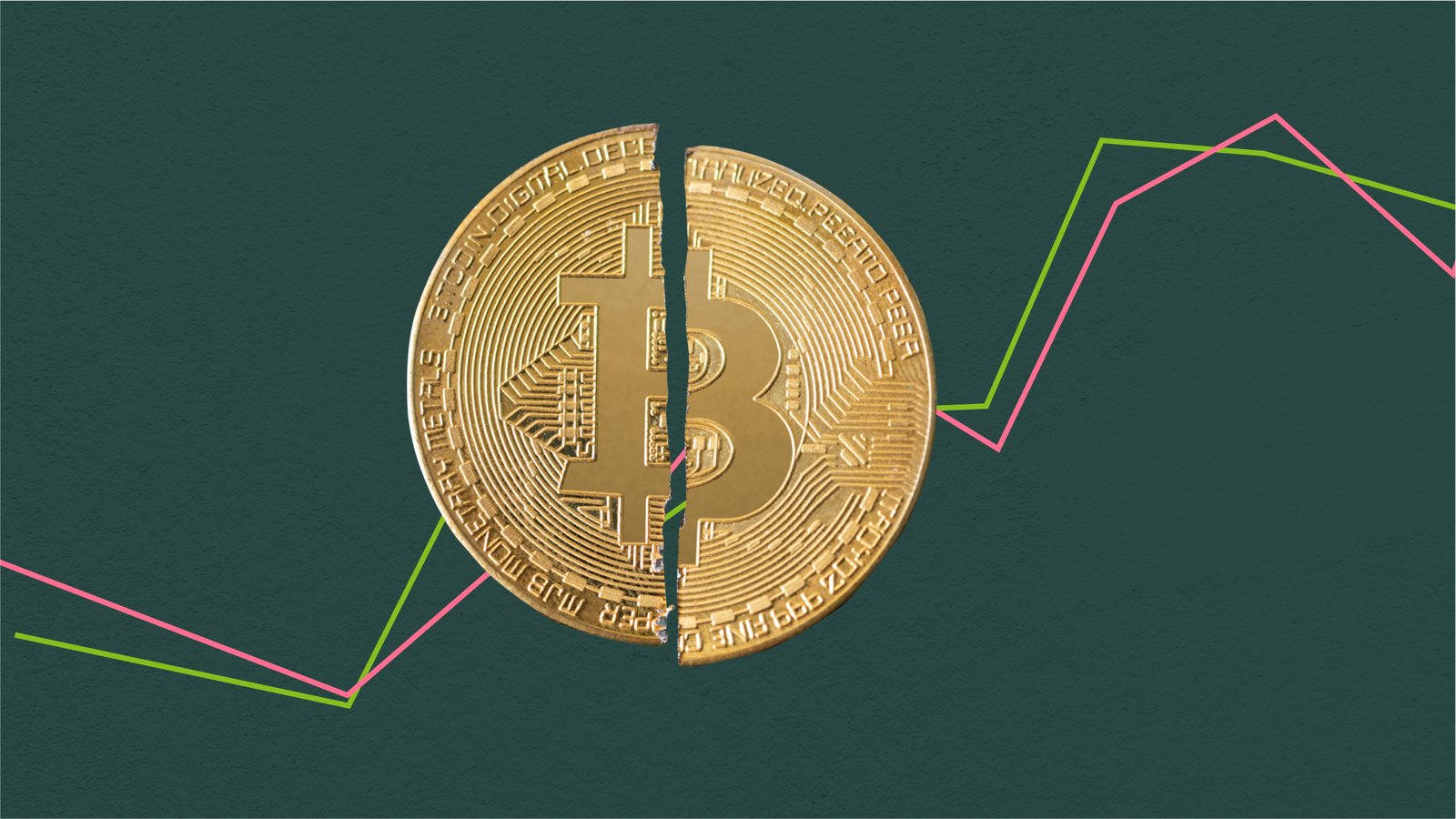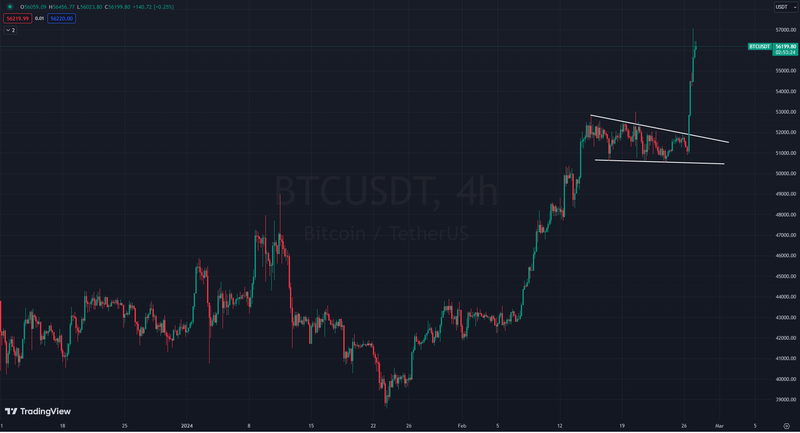Bitcoin halving poised to drive prices upward
Bitcoin reduces the number of new coins that are earned by miners in a process called halving every four years

April 2024 marks the next Bitcoin halving, mimicking gold's scarcity by cutting block rewards in half.
Past halvings saw price surges, but future gains are uncertain, so temper your expectations.
Prepare for increased miner competition, potential transaction fee hikes, and a possible rise of smaller miners.
Bitcoin formed flag and pennant pattern
After rallying above $57,000 for the first time since late 2021, Bitcoin’s outlook remains bullish on the back of demand from the spot ETFs in the US and the upcoming “halving.”
Moreover, institutional demand seems to be accelerating since the launch of spot ETFs in the US. The nine new spot ETFs have 292,827 bitcoins in asset under management or 7 times the amount of new coins mined since Jan. 11. After the halving, expected in late April, the number of new coins mined daily will reduce to 450 from 900 currently. If this demand stays constant, with supply of new coins cut in half, the price is expected to further rally from here.
As the calendar inches closer to April 2024, a tremor of anticipation electrifies the Bitcoin community. The halving, a pre-programmed event embedded in the cryptocurrency's DNA, looms large. This pivotal moment will see the block reward for miners sliced in half, from 6.25 BTC to 3.125 BTC, fundamentally altering the economic equation that underpins the entire Bitcoin ecosystem. While the precise impact remains veiled in uncertainty, the potential for a seismic shift in price, mining dynamics, and even the broader narrative surrounding Bitcoin is undeniable.
From abundance to scarcity: Understanding the halving's core purpose
Bitcoin's genesis story is intrinsically linked to scarcity. Unlike traditional fiat currencies prone to inflationary pressures, Bitcoin boasts a capped supply of 21 million coins. The halving serves as a crucial mechanism to enforce this finite nature, gradually reducing the rate at which new coins enter circulation. This mimics the scarcity principle observed in precious metals like gold, where limited supply plays a central role in price appreciation.
Beyond price: A ripple effect across the ecosystem
While the potential price impact often dominates headlines, the halving's influence extends far beyond mere speculation. It triggers a chain reaction within the Bitcoin ecosystem, impacting various facets:
Mining landscape: As block rewards shrink, miners face a profitability squeeze. This could translate to:
Intensified competition: Miners might engage in a fiercer battle for each block, potentially raising mining difficulty.
Transaction fee focus: With dwindling rewards, transaction fees will become a more critical income source, potentially impacting user transaction costs.
Rise of distributed mining: Smaller, more efficient operations might gain an edge, leading to a potentially more decentralized mining landscape.
Network security: The halving incentivizes miners to continue securing the network despite lower rewards, as transaction fees become more crucial. This reinforces the network's security and resilience against potential attacks.
Sustainability concerns: Bitcoin mining's energy consumption has been a growing source of criticism. The halving could nudge miners towards adopting more efficient hardware and renewable energy sources to remain profitable, potentially contributing to a more sustainable mining ecosystem.
Whispers of history: Past halvings and the speculative frenzy
History paints a compelling, albeit volatile, picture of past halving events. The 2012 halving witnessed a price surge from ~$12 to ~$1,200 within a year, while the 2016 event saw a meteoric rise from ~$400 to ~$20,000 in less than two years. These historical trends fuel bullish predictions for the upcoming halving, with some analysts anticipating a similar price explosion. However, caution is paramount. Past performance is not a guarantee of future results, and the market is influenced by a multitude of complex factors beyond the halving itself.
It's crucial to remember that the halving is more than just a potential price catalyst. It's a pivotal event with far-reaching consequences for the entire Bitcoin ecosystem. Understanding its impact on mining economics, network security, and sustainability is crucial for navigating the ever-evolving world of cryptocurrency.
The final chapter of this story is yet to be written. As the halving approaches, one thing is certain: the cryptocurrency community will be watching with bated breath, eagerly awaiting the next chapter in the ever-evolving saga of Bitcoin.
Growing interest in Bitcoin
Open interest in the Bitcoin futures market at the Chicago-based CME Group is approaching the record levels seen at the time when ETFs received approval. This rise in outstanding contracts indicates a growing interest in crypto-related investments and hedging activities among US institutions.
Bitcoin technical analysis
Bitcoin has exhibited a bullish rebound from the $39k level, transitioning into a sideways movement between $50k and $52k, thereby creating a flag formation. As the price surpassed the $51k mark, it formed a flag and pennant pattern. This development suggests that Bitcoin could potentially aim for a $64k target, followed by a subsequent move towards $67k as it stays above $51k.










